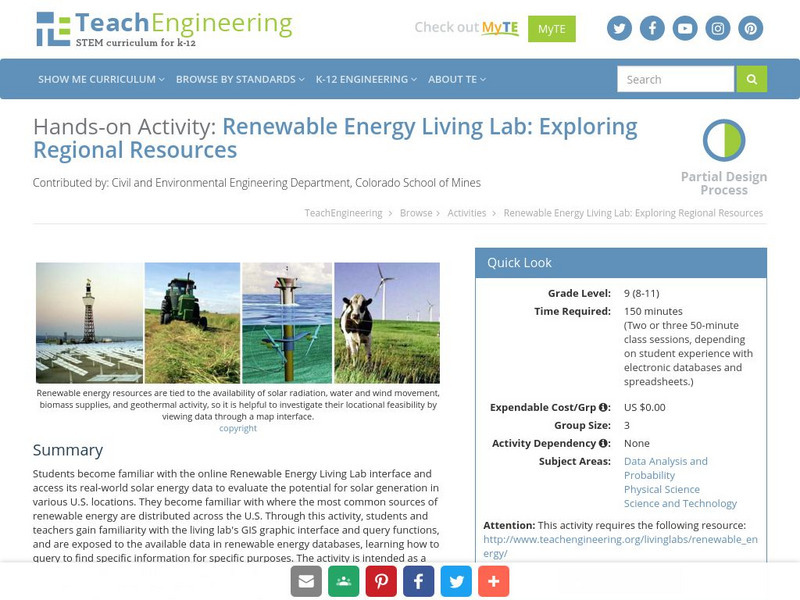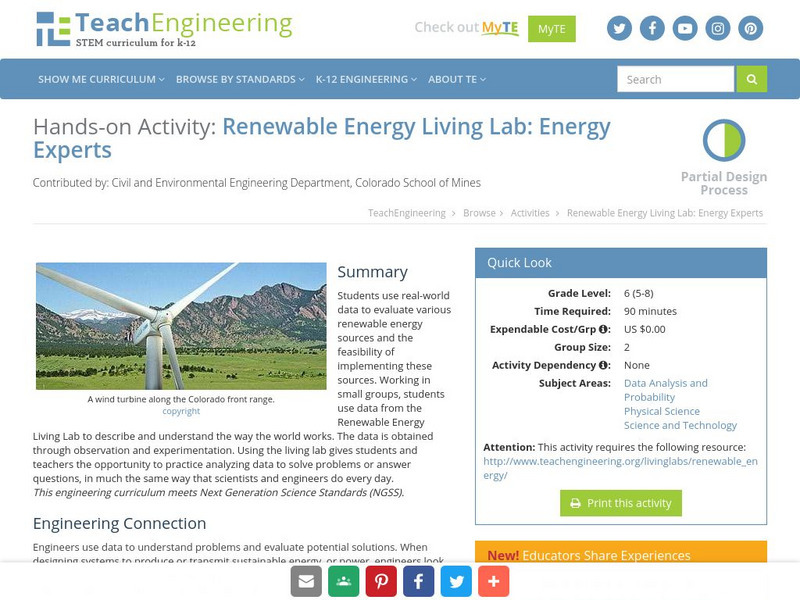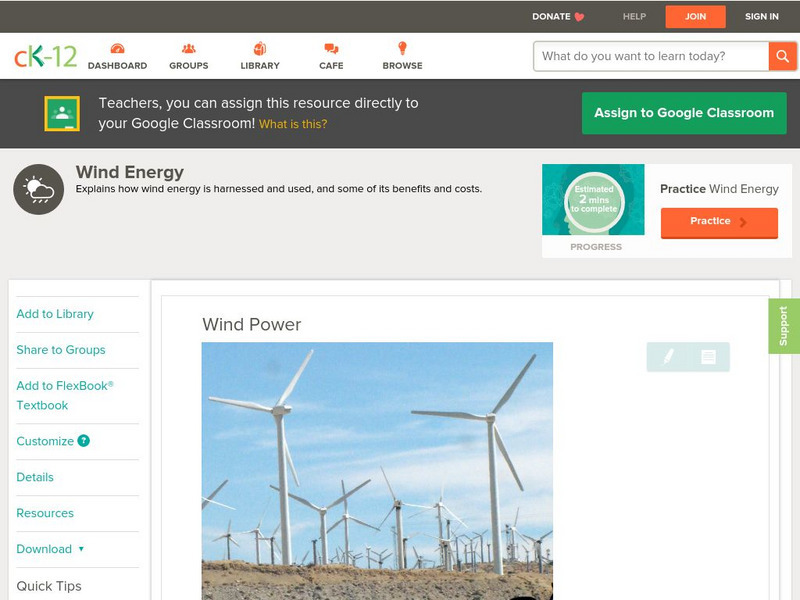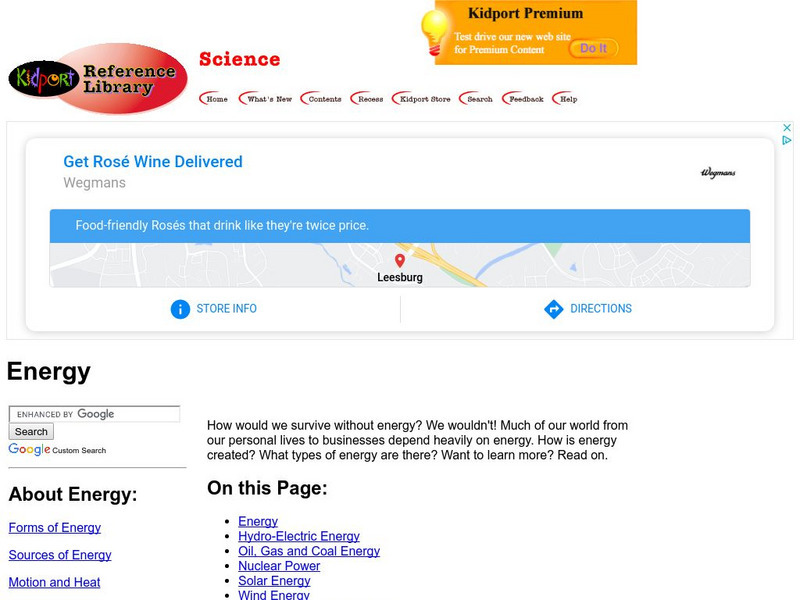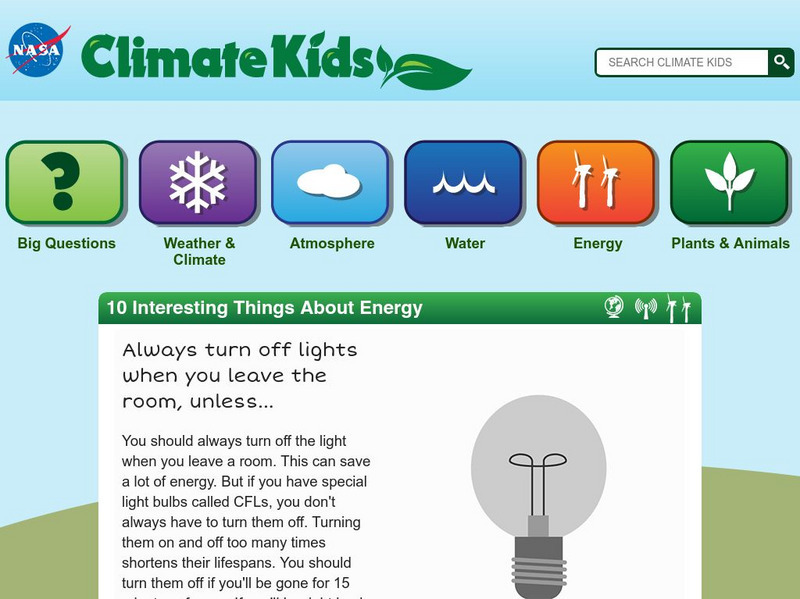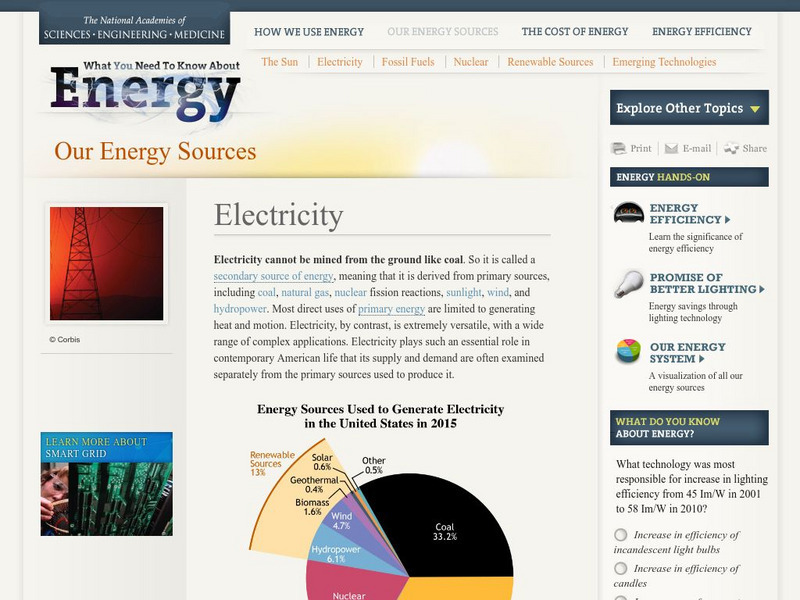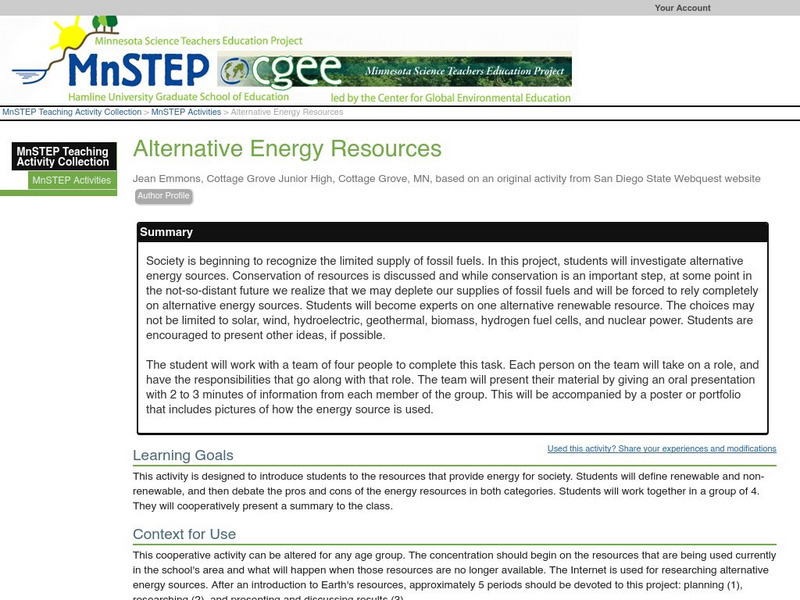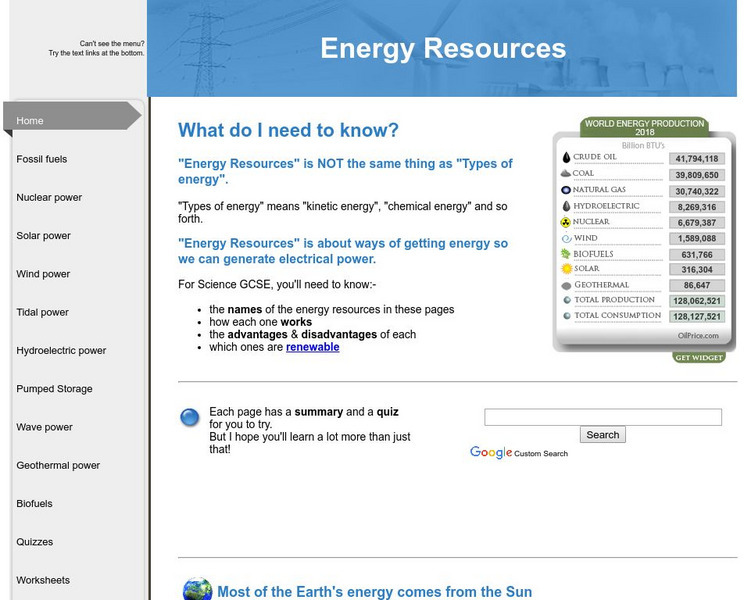Hi, what do you want to do?
CK-12 Foundation
Ck 12: Fourth Grade Science: Physical Science: Energy Resources
[Free Registration/Login may be required to access all resource tools.] Discusses nonrenewable and renewable energy resources. Outlines world energy use and ways to conserve energy.
Other
First Energy: The Electric Avenue: Energy Fun Factory
Here, students can learn all about energy sources and electricity. Activities include games and calculating energy costs in their homes.
Energy4Me
Energy4me: Energy Sources of the World [Ppt]
Learn about the many different energy resources available from our Earth. Find out the pros and cons of each type: both renewable and nonrenewable.
ClassFlow
Class Flow: Energy From the Sun
[Free Registration/Login Required] Energy from the sun causes great things to happen on Earth from the water cycle to wind and waves. This flipchart includes video clips and student assessment.
Other
California Energy Commission: Science Projects: Make an Anemometer
Nice brief description of this wind speed device and the directions to make your own.
State Energy Conservation Office-Texas
State Energy Conservation Office: The Rewards of Renewable Energy [Pdf]
The advantages of using renewable energy sources, such as the sun and the wind, are explained.
State Energy Conservation Office-Texas
State Energy Conservation Office: Renewable Energy Guide for Buildings [Pdf]
A basic guide for ways to be more energy-efficient and to use more renewable energy sources in a building. These include methods of reducing heat or cool air loss, ways of harnessing solar energy, and using the wind for ventilation.
Technovation
Curiosity Machine: Challenges: Build a Wind Powered Turbine
On this site, there is a challenge for students to engineer a machine that converts wind power into mechanical energy. This site also includes a lesson plan, tips, and a place for students to document their engineering design process.
TeachEngineering
Teach Engineering: Renewable Energy Living Lab
Students become familiar with the online Renewable Energy Living Lab interface and access its real-world solar energy data to evaluate the potential for solar generation in various U.S. locations. They become familiar with where the most...
TeachEngineering
Teach Engineering: Renewable Energy Living Lab: Energy Experts
Students use real-world data to evaluate various renewable energy sources and the feasibility of implementing these sources. Working in small groups, students use data from the Renewable Energy Living Lab to describe and understand the...
Science Buddies
Science Buddies: Project Ideas: How Horses Keep Warm in the Wind
In this mammalian biology science fair project, students will learn about methods of heat transfer and determine the best direction in which horses should stand in a cold wind to maintain their core temperature. The Science Buddies...
Technovation
Curiosity Machine: Challenges: Design a Wind Up Mars Rover
Using common household items, students are challenged to build a Mars rover that can travel using elastic energy. Site includes a lesson plan, tips, and a place for students to document their design process.
PBS
Pbs Learning Media: Evidence of Weather
Observe and annotate various images of weather phenomena in this interactive drawing tool produced by WGBH. Weather is the combination of various factors -- snow or rain, wind, sunlight and clouds, and temperature -- that happen in a...
PBS
Pbs Nova: Design a Renewable Future
This interactive Lab investigates what energy is, how it can be converted into useful forms, and why some sources are running low. The Research Challenge allows students to design their own renewable energy systems to generate power in...
TED Talks
Ted: Ted Ed: Dark Matter: The Matter We Can't See
The Greeks had a simple and elegant formula for the universe: just earth, fire, wind, and water, but this visible matter comprises only 4% of the universe. CERN scientist James Gillies tells us what accounts for the remaining 96% (dark...
Energy4Me
Energy4me: Wind Energy
Learn about the alternative energy source, wind energy. Find out the history of this renewable resource and how it works to convert wind energy into electricity.
CK-12 Foundation
Ck 12: Earth Science: Wind Power
[Free Registration/Login may be required to access all resource tools.] How wind can be used to generate power, and its consequences.
Kidport
Kidport Reference Library: Energy
A simple introduction to energy, offering information on hydro-electric energy, fossil fuels, nuclear power, solar energy, and wind energy.
NASA
Climate Kids: 10 Interesting Things About Energy
Discover 10 very interesting things about energy, including conservation, fossil fuels, daylight savings time, hydropower, wind energy, solar power, greenhouse gases and BTUs (British Thermal Units).
National Academies of Sciences, Engineering, and Medicine
The National Academies: Our Energy Sources: Electricity
Electricity is considered a secondary energy source because it is generated from other sources such as water and wind. Learn about electricity demand in the U.S. as well as the challenges we face in the future to continue to provide...
Science Education Resource Center at Carleton College
Serc: Alternative Energy Resources
Society is beginning to recognize the limited supply of fossil fuels. In this project, students will investigate alternative energy sources. Conservation of resources is discussed and while conservation is an important step, at some...
Other
Energy Resources
Finding alternative energy sources is a challenge facing the leaders of today and tomorrow. Andy Darvill has created an impressive resource, summarizing various renewable and non-renewable energy resources.
NOAA
Noaa: Weather Systems and Patterns
Imagine our weather if Earth were completely motionless, had a flat dry landscape and an un-tilted axis. This, of course, is not the case; if it were, the weather would be much different. The local weather that impacts our daily lives...
Other
Digital Library for Earth System Education: Teaching Box: Essentials of Weather
A suite of lessons focusing on the basic elements of climate and weather. Inquiry-based exploration of extreme weather events and the factors of weather including clouds, wind, air pressure, temperature, and the water cycle.









